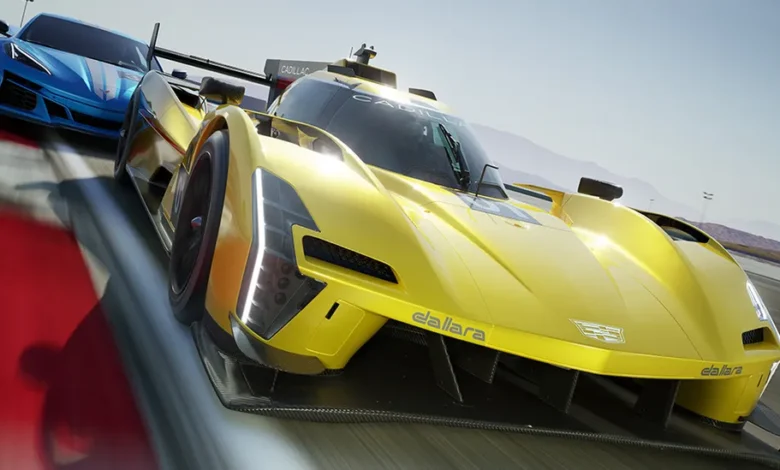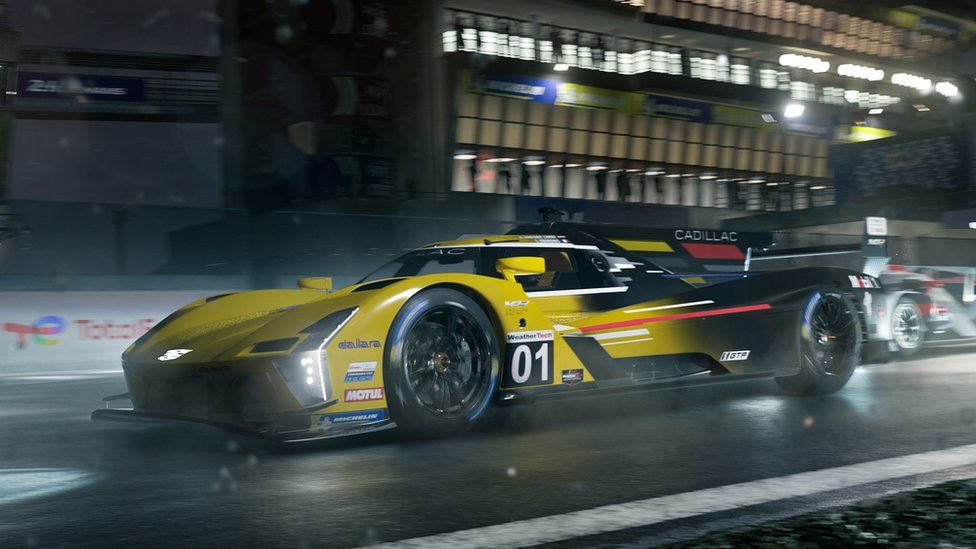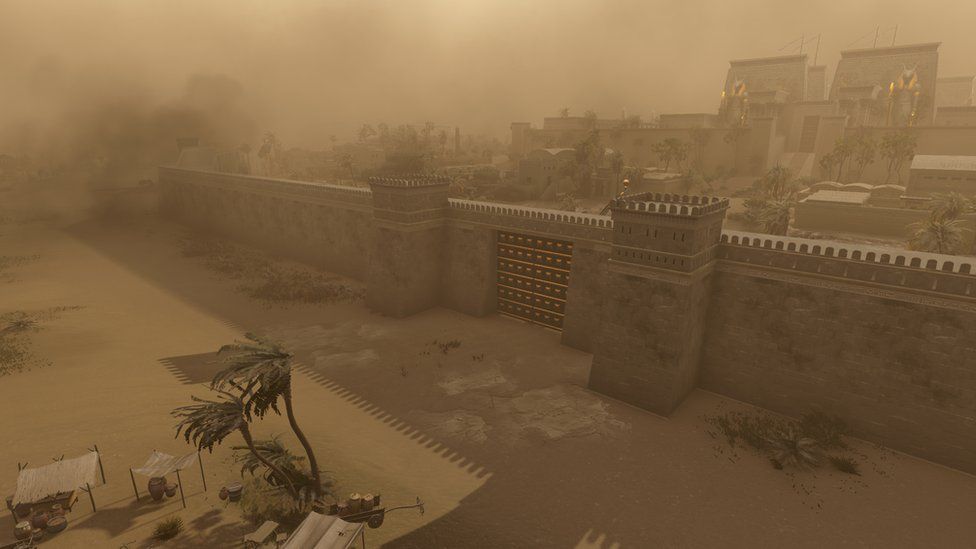Why weather in games is getting more realistic

If it’s winter where you are, you might wonder why anyone would want to simulate the weather outside – but that’s what many game developers are trying to do.
In their mission to make more realistic and immersive experiences, more studios are making wet, wild and stormy conditions a part of the experience.
And rumours about a potential “dynamic weather system” in Grand Theft Auto 6 have got gamers talking about the possibilities.
Evaporation rates and high pressure zones might not sound like a recipe for a good time, but the makers of one popular racing game would probably disagree.
Flagship Xbox exclusive Forza Motorsport made a big deal of advertising its complex weather systems when it launched its latest instalment earlier this year.
Players can race in conditions including sun, thick fog and heavy rain, which all affect things like visibility and how their car controls.
The Forza series aims to realistically simulate real-world driving, and creative director Chris Esaki tells BBC Newsbeat advances in mimicking weather have helped.
“If you’ve ever driven a car you know things are just different when it rains,” he says.
“So for us weather is such a critical part of how we build deep simulation and a rewarding set of things to master”.

Chris says accurate simulation also boosts immersion.
“There’s this storytelling that happens with lighting and weather,” he says.
“Those two conditions coming together can create drama, create tension.”
Chris, who studied environmental science before becoming a games developer, says the next generation of games will be able to take things even further, more closely copying how weather forms in our real world.
“Things like evaporation rates, low and high pressure zones and cloud formation and what that actually means for the gameplay experience and how immersive that world can be.”
While driving games might seem the obvious choice for advanced weather tech, other genres have been employing it too.
Strategy game Total War: Pharaoh, published by Sega, continues the series’ tradition of building up a kingdom, managing resources and waging battles over a years-long campaign.
Weather has always been one of the obstacles to player progress, but British developer Creative Assembly says it’s ramped things up in the latest instalment.

Where previous Total War games would rotate conditions based on historical records, the dynamic system in Pharaoh introduces more randomness.
According to the game’s battle designer Bozhidar Staykov, who’s based at the developer’s studio in Sofia, Bulgaria, this leads to more varied scenarios as conditions change mid-battle.
“One moment it can be really sunny, normal weather,” he says.
“And the next moment, a sandstorm can happen. And generals will have to improvise and adapt to the new situations that are happening on the battlefield.”
Bozhidar says the weather also interacts more realistically with the environment, affecting the terrain of the maps in real-time.
Players might find that visibility suffers, missiles suddenly aren’t as effective or whole platoons of soldiers find themselves stuck in muddy ground due to a downpour.
“The terrain changes where it used to be dry land, where you could manoeuvre and now it’s mud, it’s harder for you to manoeuvre,” he says.
But what does it mean for players?

Todd, known as Lionheartx10 to his 12,000 Twitch followers, is a big fan of the Total War franchise and regularly streams his battlefield decisions and empire-building.
Overall he’s in favour of the changes in Pharaoh, but says it’s important that accuracy doesn’t get in the way of fun.
“There’s always got to be a balance between the realism of what you’re trying to inject into these games in terms of mechanics, but also not bog down the players,” he says.
Lionheart also thinks more accuracy in a series like Total War “potentially inspires further learning and education”.
“I don’t think you often hear people say education and gaming in the same sentence, but that’s very much what you can get out of these experiences,” he says.
Playing Total War games from a young age inspired Lionheart to find out more and study Medieval history at university.
“It really built up this huge passion to learn more about the settings of these games that I was playing and enjoying,” he says.
Prof Anne Lawrence-Mathers, from Reading University, specialises in the history of meteorology and magic, and isn’t surprised weather is becoming a bigger deal in games as the topic has always fascinated us.
And when it’s used in a historical context, she says it can “challenge some of the general ideas that people in the past were basically less clever than us”.
“There were astronomers there, observing the skies and making records on clay tablets for centuries,” she says.
Even thousands of years ago, people would track the paths of particular planets and stars, “and what kind of weather accompanied those things being visible in the sky”, says Prof Anne.
“One thing that keeps striking me is how important weather forecasts have always been no matter how far back you go in the past.”










